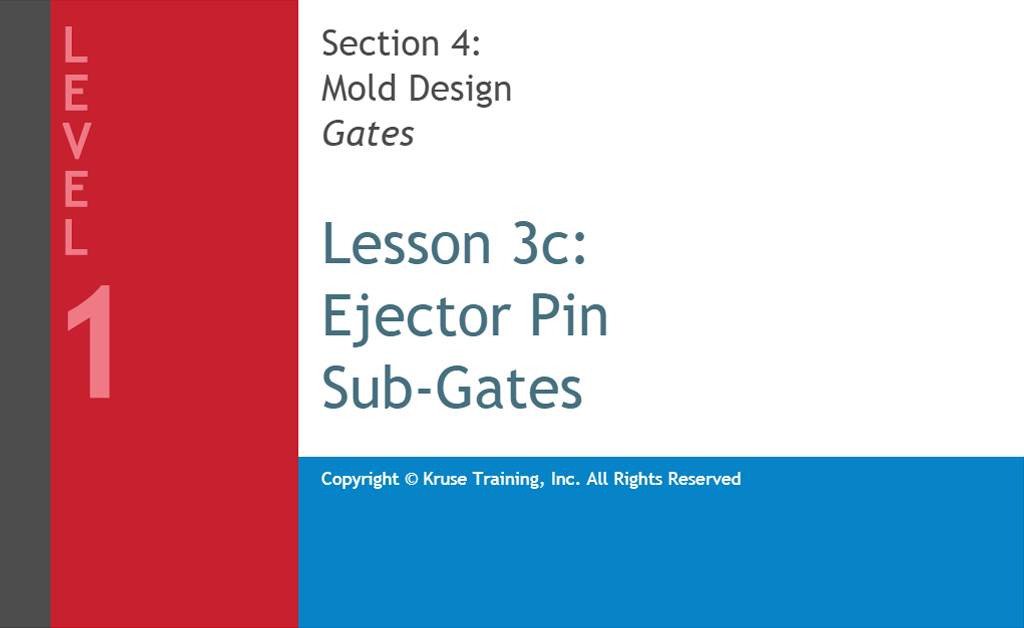Learn the basics of mold design and how various design elements impact a molded part. Build your Circle of Knowledge lesson by lesson.
Goals of Mold Design: Gates (Level 1):
- Learn the basics of mold design and how various design elements impact a molded part
- Gain an understanding of various gate styles and how they influence the molding process
- Analyze real-life simulations and learn to determine optimal outcomes
Section Description:
Gate design and placement are key factors in mold design. Types of gates, placement, and size significantly affect the outcome of a molded part, so they should be understood for maximum benefit. Because gate placement options are often limited by design restrictions and other part-related constraints, understanding and utilizing industry best practices is useful in achieving optimal results.
This section covers explanations, simulations, cause-and-effect analyses, and the uses of various design features. Understanding these design features is important because they influence a part’s moldability, function, appearance, and quality.
Recommendation: Entry-Level Operators, Technicians, & Designers
Length: Lessons are approximately 15-20 minutes long each
The Kruse Training platform delivers knowledge and expertise developed over three decades in plastic injection molding. Now, companies and individuals can access a state-of-the-art online training program suited for all levels of expertise.

